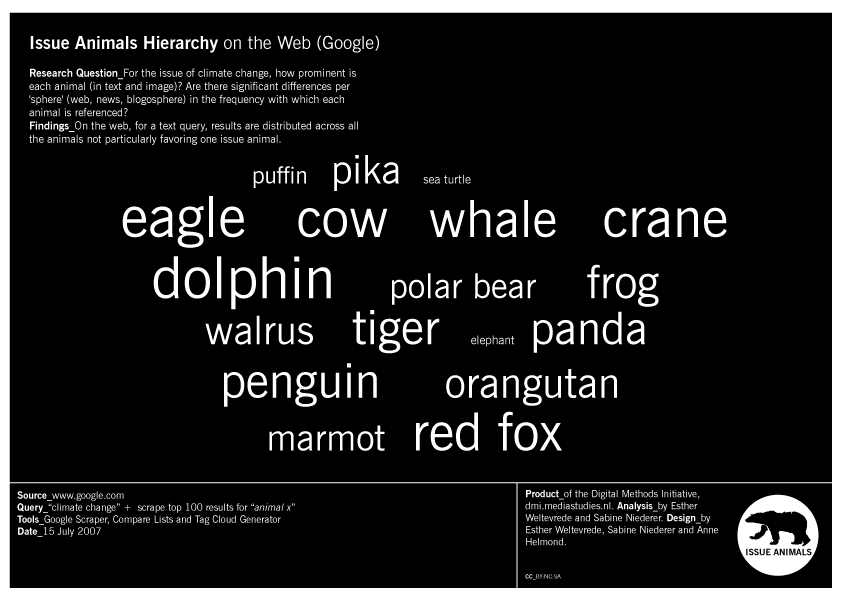Issue Cloud Analysis
Recipe: Issue Cloud Analysis
Issue Cloud Analysis offers a way to determine the prominence, currency, or relevance of specific terms in a given source set(s) or sphere(s). What are key terms among participants in the public consultation on smart metering? How do ‘elections’ feature in pro and con SOPA and PIPA web sites? There is currently a variety of tools available to detect and analyse the currency of terms online, such as Google trends, Google Insights for search or Yahoo Clues and platform-specific tools of content analysis such as twitter analysis with mention mapp. The mapping of current terms or emergent key words is further facilitated through proliferating visualisation techniques in the context of tag clouding, such as Wordle or Tagxedo. As a method, the distinguishing feature of issue cloud analysis is that it begins by delineating specific spheres or issue spaces, and only then queries these spaces for issue terms. Issue Cloud analyss measures the resonance of issue terms in specific sourcesets, delineated by the researcher. There is then a key difference between querying a whole medium (or platform) and querying a specific social, issue or organisational sphere. In the first case, one measures the currency of a term in a given medium or platform (Facebook or the web). In the second case, one measures the resonance of issue terms in a specific set of actors or sources. A related but different method compares different platforms in order to analyse the composition of issues, see Issue Profiling recipe).
Mapping Issue Resonance with Googlescraper
1 |
Delineate source set(s) Determine which web sphere or source set you want to query for issue term resonance. To ensure that your sourcesets are issue specific, select an event or report that is relevant to your issue, and derive your actor list from this (all members of a specific anti-cuts coalition; all signatories of the Budapest Open Access Initiative; all organisations linking to the Public Consultation on smart metering by the Department of Energy and Climate Change). Spheres can also be delineated by a variety of other means: a nominal criterion (active, English green blogs listed by green blog aggregators), snowballing (following links) or using engines (eg tweets on crisis) (Foot and Schneider, 2004). It is generally a good idea to triangulate your sourcesets (ie to rely on indicators of issue relevance of sources from multiple locations). Another method to delineate a source set is to draw on specific features of platforms or spaces, such as using all URLs mentioned in tweets using a particular hashtag. Finally, one may also comapre the relative resonance of issue terms across different source sets. Is ‘carbon footprint’ as prominent a term in green blogs as in the green living organisational network? | Related case studies |
2 |
Selection of issue terms There are two main ways to determine issue terms of which you are going to measure resonance: bottom-up or top-down. Top-down: select an event, report, set of organisations that are relevant to your issues, and extract your issue terms from these sources according to a straightforward criterion. (examples: all animals listed as endangered species by WWF; all sub-issues in the climate change campaigns of leading international human rights NGOs; all concerns mentioned in news reporting about a public consultation on smart metersby the Department of Energy and Climate Change) Bottom-up One may also select issue terms in a more inductive way, by using issue discovery tools and other textual analysis tools that perform word frequency analysis on raw text. This tends to result in a more exploratory study. | Related case studies |
3 |
Trace occurance of issue terms Use the Google Scraperto query the selected source set(s) for the identified key words. You will receive issue term clouds listing the number of occurences of each term in each website queried. Use the in-build visualisation tool or export the resulst to Wordle or Tagxedoto visualise the findings as tag clouds. The relative size of the issue terms indicates its proportionate prominence in the source set(s). |  |
